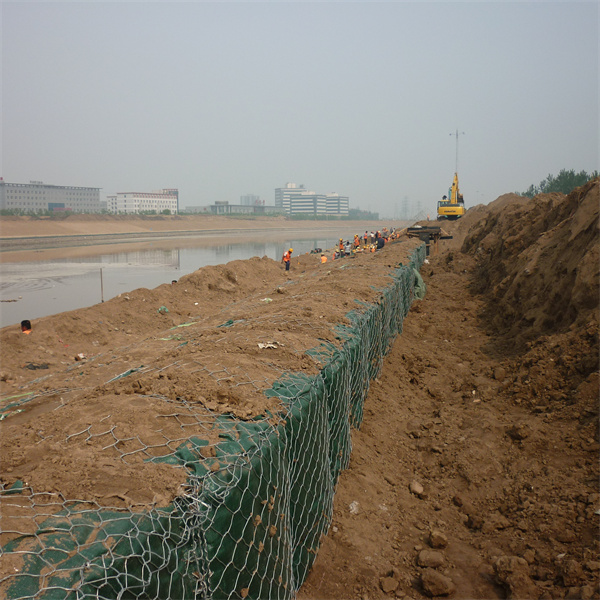Nov . 10, 2024 21:48 Back to list
Top Eco-Friendly Gabion Wall Solutions for Sustainable Landscaping and Erosion Control
Building a Sustainable Future with Green Gabion Walls
In the quest for sustainable construction methods, green gabion walls have emerged as a practical solution that marries aesthetics with functionality. This unique structure not only provides stability and erosion control but also integrates seamlessly into the natural landscape, promoting biodiversity and environmental health.
What Are Gabion Walls?
Gabion walls are structures made from gabions — wire mesh baskets filled with rocks, stones, or other materials. Traditionally used for flood and erosion control, gabions have evolved into an environmentally friendly option for landscaping and architecture. When combined with greenery, these walls take on a new identity, promoting both ecological balance and aesthetic appeal.
Benefits of Green Gabion Walls
1. Erosion Control One of the primary functions of gabion walls is to prevent soil erosion. By stabilizing banks and slopes, they help to control water flow, minimize sediment displacement, and protect the integrity of natural landscapes. The addition of plants enhances this effect, as roots penetrate the soil, further securing it.
2. Biodiversity Promotion Green gabion walls can provide habitats for various species, promoting biodiversity in urban and rural environments. By incorporating native plants, these structures encourage wildlife movement and contribute to the local ecosystem’s health.
3. Aesthetic Appeal Gabion walls can be customized to fit various design aesthetics. Whether integrated into a modern landscape or a rustic setting, their natural stone texture and greenery add visual interest and can be tailored to complement existing structures.
4. Sound Insulation In urban environments, green gabion walls can act as noise barriers, absorbing sound and reducing urban noise pollution. The combination of dense stones and vegetation provides an effective shield against noise, enhancing the quality of life in crowded areas.
5. Sustainable Resource Utilization Using local materials to fill gabion baskets not only supports local industries but also reduces transportation emissions. The construction of green gabion walls typically requires fewer materials than conventional walls, making them an eco-friendlier choice.
best green gabion wall

Designing Your Green Gabion Wall
When considering a green gabion wall, there are several design principles to keep in mind
- Material Selection Choose durable, rust-resistant materials for the mesh and consider locally sourced stones for filling the gabions. This promotes sustainability while enhancing the wall's longevity.
- Plant Selection Select native plants that thrive in your area’s climate. Native species require less maintenance and water, making them ideal for sustainable landscaping. The plants should be able to withstand the specific conditions of the site, including soil quality and sun exposure.
- Size and Placement Determine the wall's dimensions based on local regulations and the intended purpose—whether it’s for erosion control, aesthetic appeal, or privacy. Proper placement can maximize its benefits, both functional and visual.
Maintenance of Green Gabion Walls
Maintaining a green gabion wall is relatively simple. Regular checks for any structural issues with the gabions themselves are essential, as is regular pruning and care of the plants. Ensuring that the vegetation remains healthy will not only keep the appearance of the wall attractive but will also reinforce the soil stability provided by the roots.
Conclusion
Green gabion walls stand as a testament to how innovative construction methods can promote sustainability while enhancing natural beauty. By integrating aspects of nature into our built environment, we can create spaces that are both functional and inviting. As awareness of environmental issues continues to grow, the popularity of green gabion walls is likely to increase, paving the way for a more sustainable future that harmonizes nature and human design. Embracing these walls not just as a construction method, but as a way to foster environmental awareness, will be essential in our efforts toward sustainability.
-
Understanding Load-Bearing Capacity of Gabion Boxes
NewsJul.17,2025
-
The Importance of Corrosion-Resistant Wire in Gabion Construction
NewsJul.17,2025
-
How Gabion Boxes Prevent Soil Erosion Effectively
NewsJul.17,2025
-
Environmental Benefits of Gabion Cages
NewsJul.17,2025
-
Best Stone Types for Gabion Walls with Steps
NewsJul.17,2025
-
Benefits of Using Rock Gabion Baskets in Landscaping
NewsJul.17,2025
-
The Role of Galvanized Gabion Mesh in Riverbank Protection
NewsJun.26,2025






